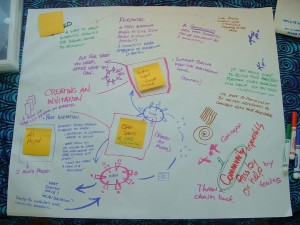The real questions are: whom do we trust, why, and under what conditions is trust transferable?
Chris Brogran asks: How does the web define authority?
First is an important matter of language. There is a large difference between authority and an authority. Authority is power formally granted by a position or role. An authority is some who has power or influence; it’s a matter of trust by others for a given context. E.g. I trust my doctor to diagnose an illness, but have no reason to trust him on gardening.
There are many reasons we (dis-) trust others, including: shared opinions; length, frequency, and consistency of interactions; and how our peers feel about the individual the given context. These are all correlated, but frequency and peer opinion have the biggest impact on transferability of trust.
How use doth breed a habit in a man! — William Shakespeare, Two Gentlemen of Verona
Frequency can be no surprise, it’s the underpinning of blanket marketing. Familiarity bred through repetition. Ever wonder why you stop on a TV show you dislike while flipping through the channels? Of course, that could be me making excuses for lousy taste.
Peer consideration is the tricky bit. There is a lot of research going into this, but there are some great seminal works that are written for non-academics covering the spread of innovation and adoption of scientific principles.
When our peers already have some experience or opinion on a topic or an authority, then our own opinions are strongly colored by these existing opinions. In fact, as odd as it may sound, given a pattern of relationships where the opinion of all but one individual is known, we can predictably estimate both what the opinion is, and how strong the opinion is, of the unknown person.
But how about when we something brand new to us and our peers? Frequency plays a big role here too. If lots of people, even people we know nothing about, say XYZ is a good idea, we’re likely to give it the benefit of the doubt, trusting the wisdom of the crowd.
So, strictly speaking, is (dis-) trust transferable? Depends. If trust already exists in our network of peers, yes, and predictably so. If the context is brand new to you and your peers, there is no trust to transfer, but we use frequency as a proxy in our decisions.
So what does this all mean? Let’s look at an example: you’re trying to decide whether you agree (trust) what I have written.
I am new to writing about this, and I’m not particularly active in social media, so chances are we don’t have peers in common. You can google for what others have said about me, but you’re not going to find much relevant to trusting me in this context. Ultimately, because I don’t have a track record (frequency & consistency) for participation (peers) in this context, I am at the mercy of how similar our outlooks are, and any opinions that may develop in comments.




